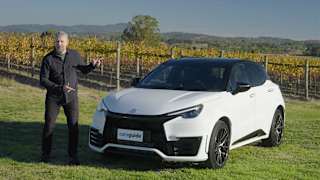Kia dropped prices for this updated and facelifted model range - and not by a small amount, either. So, what's the price? How much does it cost?
The Si model is the entry-grade of two models, and it comes in at the bottom of the price list at $33,290 plus on-road costs (rrp) - an $1100 drop over the previous version. The Si, then, is a value-focused sedan that you might consider if you’ve looked at a Toyota Camry Ascent, Hyundai Sonata Active, Mazda6 Sport or Subaru Liberty 2.5i.
The standard equipment list is pretty good - although there have been some deletions, because the price is down $1100. The rather good HID headlamps with washers have been dumped in favour of halogen projector lights (yeah, not even xenons), and the satellite navigation system (GPS) is gone.
But now the 7.0-inch media screen is capable of doing the Apple CarPlay iPhone connectivity and Android Auto phone mirroring thing, and that’ll serve most people’s purposes pretty well, but there is no digital DAB radio, and no CD player for the sound system. Other standard kit includes a digital driver info display with digital speedo, dual-zone climate control, cloth seat trim, auto-dimming rear-view mirror, a reversing camera, front and rear parking sensors, auto headlights and rain sensing wipers, and 17-inch alloy wheels (with a full-size spare).
New equipment for the Si includes driver-fatigue monitoring and an active lane-keeping assistance system (in place of the old lane-departure-warning buzzer).
If you want all the fruit you really need to fork out the extra cash for the GT, which lists at $43,290 plus on-roads (vs $33,290 for the Si). That is getting perilously close to Kia Stinger territory… but let's not get too far ahead of ourselves - this isn't a model comparison!
You get a fair bit more for your dough, but even the GT has seen a few deletions to help justify its $1200 price drop compared to the pre-facelift model, such as the front passenger seat being manually operated (previously electric), the cooling/ventilation of the front seats has been deleted, and the panoramic sunroof of the previous model is gone, too. And while it rides on 18-inch rims with a new design, the tyre-pressure-monitoring system has been removed.
It uses a new 8.0-inch media screen with extended smartphone connectivity and in-built sat nav (with 10 years of maps included and SUNA live traffic updates), and it also gains redesigned LED headlights but they lose the smart auto high-beam assistance of the old model. The tech doesn't go as far as to include Homelink garage door opening here in Australia, either.
Other standard kit in the GT includes leather seats, electric driver’s seat adjustment with memory settings, smart key (keyless entry) and push button start, a sports body kit, a harman/kardon audio system with 10 speakers and a subwoofer, wireless phone charging (Qi) but no Wi-Fi hotspot, rear sunshades (but no tinted windows), different interior trim finishes, a heated steering wheel, and a colour driver-information screen.
The GT also gets the new lane assist system and driver-fatigue monitor, and the entire safety approach has been improved across the range. See the safety section below for more detail.
There is no launch edition, nor is there a sports edition, but there is a decent array of colours (or colors, depending on where you're reading this) available - black, white, blue, red, grey and silver can be chosen, but not brown, purple or gold... if you wanted those.
Accessories available across both trim levels include tailored floor mats, a dash mat and weathershields, among other items.































































